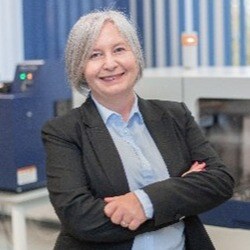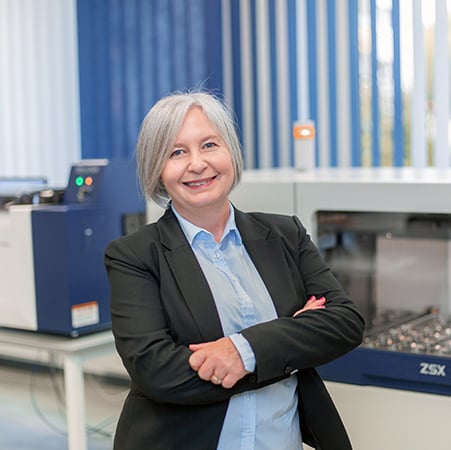Analysis of Alternative Fuels Using XRF

This is a written summary of a live webinar presented on June 26, 2025. The recording and resources are available on the recording page.
Presented by:

Webinar summary
This webinar focused on how wavelength dispersive X-ray fluorescence (WDXRF) is applied to assess the composition of alternative fuels used in cement manufacturing, especially during the clinker burning stage. The context is the cement industry’s growing shift toward more sustainable practices due to economic pressure, stricter emissions requirements, and a need for thermal efficiency.
WDXRF is commonly used throughout the cement production process, from raw material evaluation to final product quality control. However, this session zeroed in on the complexities introduced by burning alternative fuels—materials like shredded tyres, plastics, sewage sludge, and agricultural waste like elephant grass. These fuels often have unpredictable and variable compositions, which can affect the chemistry of the clinker and the stability of the kiln operation.
The challenge with analyzing such fuels lies in their heterogeneity and high organic content. Traditional methods based on predefined calibration standards aren't practical here, since there often aren't standardized reference materials for these diverse wastes. To work around that, the Rigaku team uses a technique called semi-quantitative analysis via "scattering FP" (fundamental parameters). This approach takes advantage of how X-rays scatter when interacting with light elements (like carbon, hydrogen, and oxygen) to estimate their concentration without needing exact calibration standards. The method relies on measuring Compton scattering lines to infer the balance of light elements that XRF can't detect directly.
Sample preparation is critical. The fuels, often highly irregular in shape and texture, are shredded and cryogenically milled—frozen with liquid nitrogen and ground into a fine, uniform powder. This powder is then pressed into solid pellets for consistent analysis. Without thorough preparation, results are unreliable because XRF readings depend on consistent sample thickness and density, especially for heavier elements like bromine or lead that penetrate deeper.
Different instruments were discussed, including bench-top and full-size WDXRF units. Each offers trade-offs in terms of sensitivity and suitability depending on the specific sample (e.g., a smaller unit may detect chlorine more effectively due to fewer background interferences). Regardless of the system, repeatability of the measurement—meaning how consistently it can give the same result—is a strength of the method, even with complex samples.
Finally, the presentation outlined the broader support and calibration tools Rigaku provides, such as reference standards, matching libraries, and software packages tailored for cement industry requirements. They emphasized that while accuracy is always the goal, precision—getting reproducible results from similar samples—is key when dealing with variable fuels.
In short, WDXRF is being adapted and applied effectively to help cement plants manage the switch to alternative fuels without compromising clinker quality or plant performance. It's a story of evolving analytical tools keeping pace with industrial sustainability needs.
Key questions answered in this webinar:
-
The cement industry is undergoing significant changes driven by several factors. There's a stronger demand for better thermal and energy efficiency, leading to increased use of alternative fuels and clinker substitution. Additionally, the industry faces challenges like a shortage of skilled personnel and persistent cost pressures. Utilizing alternative fuels helps address these modern requirements by reducing reliance on fossil fuels, cutting costs, and significantly lowering CO₂ emissions, which is a major driver for "greener cement" in the 21st century.
-
When alternative fuels are used in the clinker burning process, their ash composition influences the final clinker by adding to its makeup (clinker ash pickup). This can affect the desired elemental composition (like CaO, SiO₂, Al₂O₃, and Fe₂O₃) and the resulting phases within the clinker. Minor elements found in alternative fuels, such as manganese, titanium, phosphorus, vanadium, zinc, and lead (especially prevalent in industrial waste like tyres and pet coke), can detrimentally influence clinker reactivity and strength. For instance, zinc from tyres can impact C3S content, and lead is highly volatile, affecting clinker reactivity. Therefore, precise analytical quantification of alternative fuels is crucial to maintain final product quality and process stability.
-
Alternative fuels used in the cement industry can be broadly categorized into liquids and solids. Liquid alternative fuels include waste oils (solvents, animal fats), sewage, and sludges. Solid alternative fuels are more diverse and include pet cokes, shredded tyres (tyre-derived fuels or TDF), animal meal, bone meal, dried sewage sludges, and refuse-derived fuels (RDF). RDF specifically encompasses materials like paper and pulp, cardboard, plastics, packaging, wood, and textiles from industrial, municipal, and commercial waste. While medical waste can also be used, its environmental impact requires careful consideration. The cement industry is the highest user of tyre-derived fuels compared to paper and pulp mills or electrical utilities.
-
X-ray fluorescence (XRF) is a primary analytical tool for assuring the proper composition of materials, including alternative fuels, by detecting major, minor, and trace elements (especially heavy and transition metals).
Other important analytical tools include:
- Microscopy: Used to examine phase sizes, amount distribution, and other characteristics that reveal information about clinker history and kiln temperature profiles, aiding in improving clinker grindability.
- X-ray diffraction (XRD): Useful for determining mineralogical composition of clinker and identifying unknown materials that may cause problems like kiln buildups or cyclone chokes.
- Thermal analysis: Quantifies organic emissions from fuels and secondary materials, and investigates cement sulfate forms and hydration products, aiding in problem-solving for operational issues.
-
WDXRF systems like Rigaku's ZSX Primus series are designed for elemental analysis. For alternative fuels, which are often complicated, heterogeneous, and high in organic content (carbon, hydrogen, oxygen, nitrogen), traditional quantitative methods with calibration standards are difficult to set up due to the lack of suitable analytical standards. Therefore, WDXRF utilizes a "semi-quantitative analysis" method called SQX, which involves:
- Qualitative scan: Identifying detected elements and their characteristic X-ray lines.
- Fundamental Parameters (FP) method: Quantifying concentrations using a factory-set sensitivity library based on measured intensities from the unknown sample.
- Scattering FP method: Particularly useful for organic-rich alternative fuels, this method estimates the balance of organic components by measuring the Compton scattered X-ray line, which is influenced by hydrogen, carbon, oxygen, and nitrogen content. This allows for successful measurement of materials like plastics, tyres, and biomass.
-
Due to the heterogeneous nature of alternative fuels, proper sample preparation is crucial to ensure representative and accurate XRF results. The preferred method involves:
- Drying: Removing moisture from the material.
- Cutting/shredding: Passing the dried material through a cutting mill to reduce particle size.
- Splitting: Obtaining a representative sample from the larger, shredded material.
- Cryogenic milling: Treating the material with liquid nitrogen to make it hard and brittle, followed by pulverization to achieve a homogeneous fine powder.
- Pressing (hot pressing for organic-rich samples): Compressing the pulverized powder into a stable pellet with a defined density and smooth analytical surface. Hot pressing, which uses heating plates, is especially beneficial for high-organic content materials like plastics, as it melts and consolidates the sample, ensuring infinite thickness for accurate analysis of both light and heavy elements. Ashing is generally not preferred as it can lead to the loss of volatile lighter elements like chlorine.
-
Several challenges exist when analyzing alternative fuels with XRF:
- Heterogeneity: Alternative fuels are often physically diverse. This is addressed by meticulous sample preparation involving drying, shredding, cryogenic milling, and pressing to achieve a more homogeneous sample. However, it's often recommended to take multiple measurements from highly heterogeneous samples.
- Complex matrix: The varied composition, especially the high organic content, makes traditional quantitative analysis difficult due to the lack of suitable calibration standards. The "scattering FP method" in WDXRF software is specifically designed to handle these organic-rich matrices by estimating the balance of carbon, hydrogen, oxygen, and nitrogen.
- Volatile elements: Ashing samples can lead to the loss of volatile elements like chlorine. Cryogenic milling followed by pressing is preferred to retain the entire elemental composition.
- Analyzing depth: Heavier elements have a deeper X-ray penetration. It's critical to ensure the prepared pellet is thick enough to satisfy the required analyzing depth for accurate measurement of these elements; otherwise, results may not be trustworthy.
-
Rigaku's WDXRF spectrometers (ZSX Primus series, Simultix 15, Supemini200) are norm-compliant with international standards like ASTM, EN, and ISO (e.g., ISO 29581 for fusion and pressed powder methods). They offer:
- Pre-calibration packages: These provide wide-range calibration for raw materials, clinker, and cement (e.g., OXIDE-FB-Pak) and narrower ranges for specific materials like cement, raw meal, and clinker.
- Pressed powder calibration sets: Available for cement, slags, clays, limestones, dolomites, sand, gypsum, and bauxite.
- Matrix matching calibration: Rigaku assists customers in certifying their in-house reference materials (secondary standards) to achieve matrix-matched calibrations, which are crucial for high accuracy and precision, especially with the pressed powder method.
- Software capabilities: Include both empirical and fundamental parameters calibration, as well as features for calibration maintenance (check samples, drift corrections) and data integration with external systems like LIMS.
- Service and support: Rigaku provides help desk support, extensive technical and application support, and flexible service contracts, emphasizing their rugged, reliable, and user-friendly XRF equipment designed for industrial environments.

Subscribe to the Bridge newsletter
Stay up to date with materials analysis news and upcoming conferences, webinars and podcasts, as well as learning new analytical techniques and applications.

Contact Us
Whether you're interested in getting a quote, want a demo, need technical support, or simply have a question, we're here to help.
